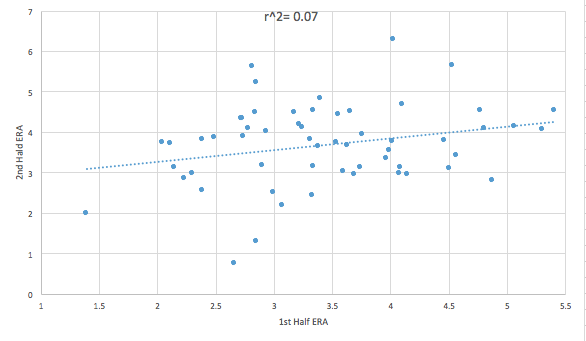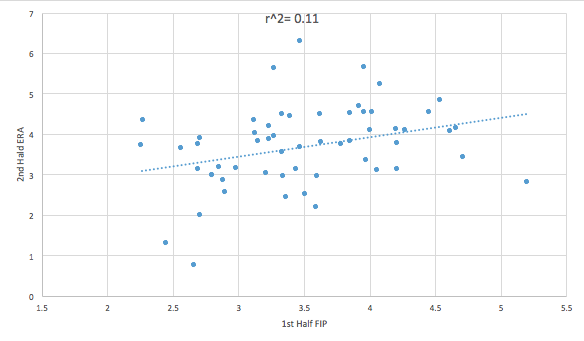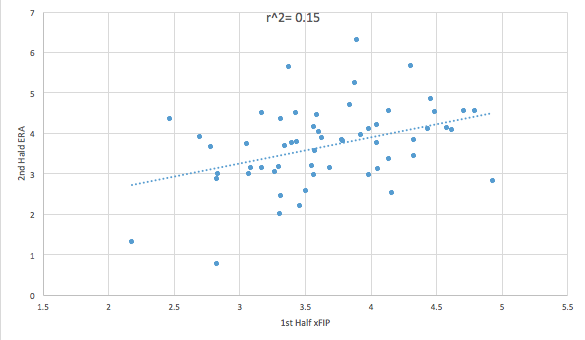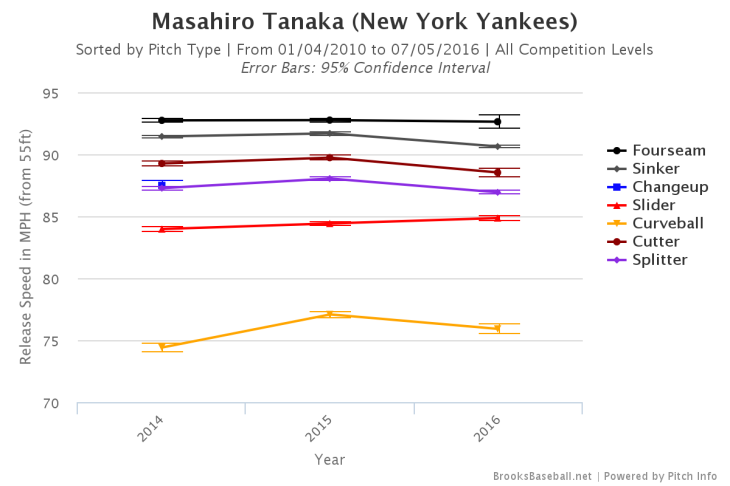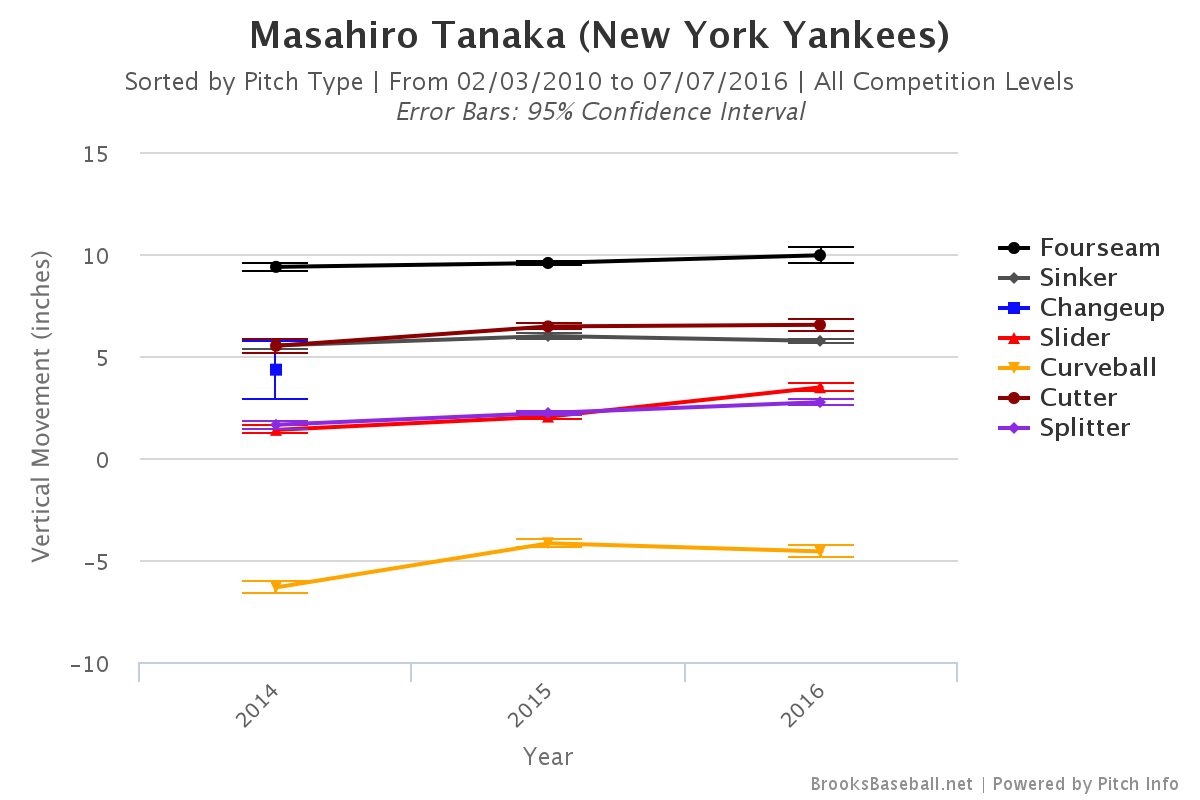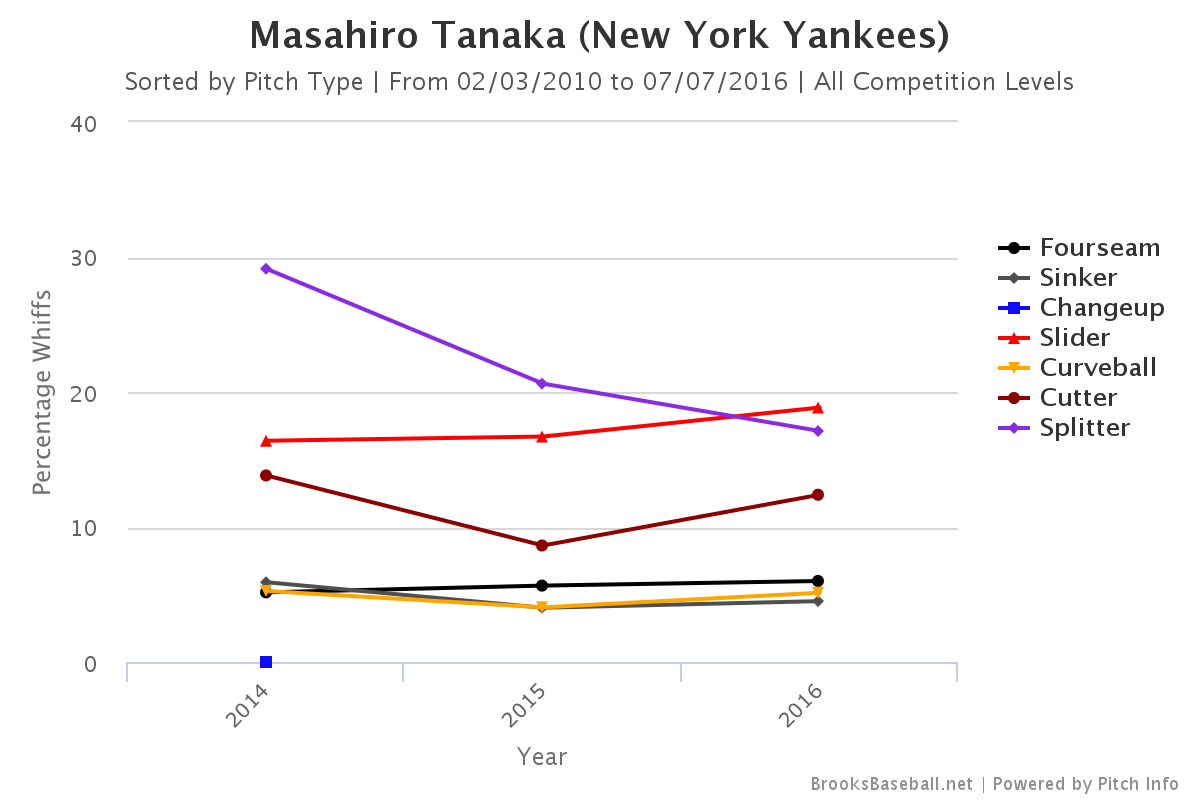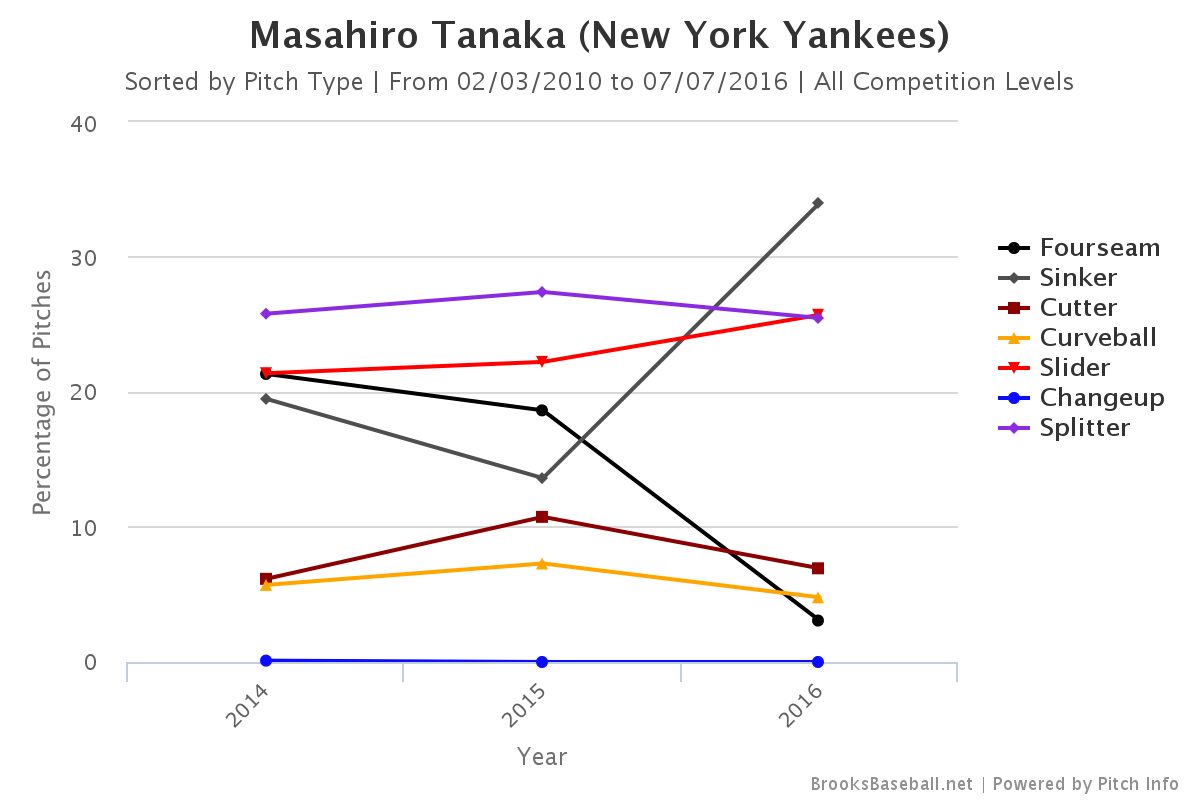In “Hardball Retrospective: Evaluating Scouting and Development Outcomes for the Modern-Era Franchises”, I placed every ballplayer in the modern era (from 1901-present) on their original team. I calculated revised standings for every season based entirely on the performance of each team’s “original” players. I discuss every team’s “original” players and seasons at length along with organizational performance with respect to the Amateur Draft (or First-Year Player Draft), amateur free agent signings and other methods of player acquisition. Season standings, WAR and Win Shares totals for the “original” teams are compared against the “actual” team results to assess each franchise’s scouting, development and general management skills.
Expanding on my research for the book, the following series of articles will reveal the teams with the biggest single-season difference in the WAR and Win Shares for the “Original” vs. “Actual” rosters for every Major League organization. “Hardball Retrospective” is available in digital format on Amazon, Barnes and Noble, GooglePlay, iTunes and KoboBooks. The paperback edition is available on Amazon, Barnes and Noble and CreateSpace. Supplemental Statistics, Charts and Graphs along with a discussion forum are offered at TuataraSoftware.com.
Don Daglow (Intellivision World Series Major League Baseball, Earl Weaver Baseball, Tony LaRussa Baseball) contributed the foreword for Hardball Retrospective. The foreword and preview of my book are accessible here.
Terminology
OWAR – Wins Above Replacement for players on “original” teams
OWS – Win Shares for players on “original” teams
OPW% – Pythagorean Won-Loss record for the “original” teams
AWAR – Wins Above Replacement for players on “actual” teams
AWS – Win Shares for players on “actual” teams
APW% – Pythagorean Won-Loss record for the “actual” teams
Assessment
The 2004 Kansas City Royals
OWAR: 40.4 OWS: 264 OPW%: .483 (78-84)
AWAR: 16.8 AWS: 173 APW%: .358 (58-104)
WARdiff: 23.6 WSdiff: 91
The “Original” 2004 Royals placed third in the American League Central division, 12 games behind the Indians. The “Actual” 2004 Royals lost 104 contests. Carlos Beltran (.267/38/104) enjoyed a monster campaign as he narrowly missed the 40/40 club. The Royals center fielder compiled 121 tallies and swiped 42 bags in 45 attempts. However he only earned 11.4 Win Shares for the “Actual” Royals (vs. 29 WS for the “Originals) due to a mid-season trade to the Houston Astros. Fellow outfielder Jeff Conine contributed 35 doubles while first-sacker Mike Sweeney went yard on 22 occasions.
Juan Gonzalez of the “Actuals” placed 52nd in the “The New Bill James Historical Baseball Abstract” top 100 player rankings.
Original 2004 Royals Actual 2004 Royals
| LINEUP |
POS |
OWAR |
OWS |
LINEUP |
POS |
AWAR |
AWS |
|
| Jeff Conine |
LF |
2.29 |
14.93 |
David DeJesus |
LF/CF |
0.65 |
8.92 |
| Carlos Beltran |
CF |
6.77 |
29.02 |
Carlos Beltran |
CF |
2.78 |
11.47 |
| Michael Tucker |
RF |
1.25 |
14.12 |
Matt Stairs |
RF |
0.12 |
10.96 |
| Johnny Damon |
DH/CF |
4.34 |
25.1 |
Ken Harvey |
DH/1B |
0.42 |
9.33 |
| Mike Sweeney |
1B |
1.9 |
12.49 |
Mike Sweeney |
1B |
1.9 |
12.49 |
| Ruben Gotay |
2B |
-0.41 |
2.79 |
Tony Graffanino |
2B |
0.27 |
6.56 |
| Ramon Martinez |
SS |
0.21 |
5.64 |
Angel Berroa |
SS |
0.38 |
10.55 |
| Joe Randa |
3B |
0.35 |
13.1 |
Joe Randa |
3B |
0.35 |
13.1 |
| Brent Mayne |
C |
-0.39 |
3.69 |
John Buck |
C |
0.32 |
4.67 |
| BENCH |
POS |
OWAR |
OWS |
BENCH |
POS |
AWAR |
AWS |
|
| Ken Harvey |
1B |
0.42 |
9.33 |
Desi Relaford |
3B |
-1.07 |
3.69 |
| David DeJesus |
CF |
0.65 |
8.92 |
Benito Santiago |
C |
0.04 |
3.4 |
| Andres Blanco |
SS |
0.5 |
2.32 |
Alberto Castillo |
C |
0.6 |
2.96 |
| Juan Brito |
C |
-0.83 |
2.29 |
Calvin Pickering |
DH |
0.3 |
2.94 |
| Dee Brown |
LF |
-0.71 |
2.24 |
Ruben Gotay |
2B |
-0.41 |
2.79 |
| Kit Pellow |
RF |
-0.59 |
1.08 |
Juan Gonzalez |
RF |
0.12 |
2.69 |
| Shane Halter |
3B |
-0.19 |
1.05 |
Abraham Nunez |
RF |
-0.47 |
2.58 |
| Alex Prieto |
2B |
-0.03 |
0.75 |
Andres Blanco |
SS |
0.5 |
2.32 |
| Matt Treanor |
C |
-0.11 |
0.51 |
Kelly Stinnett |
C |
0.48 |
2.27 |
| Byron Gettis |
LF |
-0.08 |
0.38 |
Dee Brown |
LF |
-0.71 |
2.24 |
| Alexis Gomez |
LF |
-0.07 |
0.29 |
Aaron Guiel |
LF |
-0.55 |
0.49 |
| Mendy Lopez |
2B |
-0.5 |
0.22 |
Ruben Mateo |
RF |
-0.72 |
0.43 |
| Brandon Berger |
LF |
-0.33 |
0.2 |
Byron Gettis |
LF |
-0.08 |
0.38 |
| Donnie Murphy |
2B |
-0.25 |
0.2 |
Alexis Gomez |
LF |
-0.07 |
0.29 |
| Raul Gonzalez |
RF |
-0.16 |
0.12 |
Jose Bautista |
3B |
-0.23 |
0.27 |
| Paul Phillips |
C |
0 |
0.1 |
Mendy Lopez |
2B |
-0.5 |
0.22 |
| Mike Tonis |
C |
-0.11 |
0.03 |
Brandon Berger |
LF |
-0.33 |
0.2 |
| Larry Sutton |
1B |
-0.01 |
0.03 |
Donnie Murphy |
2B |
-0.25 |
0.2 |
|
|
|
|
Wilton Guerrero |
2B |
-0.22 |
0.18 |
|
|
|
|
Paul Phillips |
C |
0 |
0.1 |
|
|
|
|
Adrian Brown |
LF |
-0.07 |
0.08 |
|
|
|
|
Mike Tonis |
C |
-0.11 |
0.03 |
|
|
|
|
Rich Thompson |
RF |
-0.03 |
0.02 |
|
|
|
|
Damian Jackson |
RF |
-0.12 |
0.01 |
|
|
|
|
|
|
|
|
|
|
|
|
|
|
|
Jon Lieber recorded 14 victories and yielded only 18 bases on balls in 27 starts. Glendon Rusch fashioned a 3.47 ERA as he split time between starting and relief roles. Zack Greinke delivered 8 victories and a 3.97 ERA in his inaugural season. Tom “Flash” Gordon (9-4, 2.21) whiffed 96 batsmen in 89.2 innings and achieved All-Star status.
Original 2004 Royals Actual 2004 Royals
| ROTATION |
POS |
OWAR |
OWS |
ROTATION |
POS |
AWAR |
AWS |
| Jon Lieber |
SP |
2.87 |
10.43 |
Zack Greinke |
SP |
3.62 |
9.73 |
| Glendon Rusch |
SP |
3.02 |
10 |
Jimmy Gobble |
SP |
0.87 |
5.37 |
| Zack Greinke |
SP |
3.62 |
9.73 |
Dennys Reyes |
SP |
0.79 |
4.58 |
| Jimmy Gobble |
SP |
0.87 |
5.37 |
Jeremy Affeldt |
SP |
0.11 |
4.42 |
| Jeremy Affeldt |
SP |
0.11 |
4.42 |
Darrell May |
SP |
-0.05 |
4.07 |
| BULLPEN |
POS |
OWAR |
OWS |
BULLPEN |
POS |
AWAR |
AWS |
| Tom Gordon |
RP |
3.66 |
15.47 |
Shawn Camp |
RP |
0.17 |
4.15 |
| Dan Miceli |
RP |
0.73 |
7.13 |
Jaime Cerda |
RP |
0.69 |
4.05 |
| Lance Carter |
RP |
0.76 |
6.53 |
Nate Field |
RP |
0.07 |
3.02 |
| Kiko Calero |
RP |
0.7 |
5.7 |
Scott Sullivan |
RP |
0.12 |
2.85 |
| Orber Moreno |
RP |
0.08 |
2.84 |
Jason Grimsley |
RP |
0.59 |
2.55 |
| Wes Obermueller |
SP |
-0.01 |
2.98 |
Brian Anderson |
SP |
-0.71 |
2.84 |
| Ryan Bukvich |
RP |
0.12 |
0.82 |
Mike Wood |
SP |
0.24 |
1.91 |
| Chad Durbin |
RP |
-1.03 |
0.39 |
Jimmy Serrano |
SP |
0.5 |
1.57 |
| Rodney Myers |
RP |
0.06 |
0.29 |
D. J. Carrasco |
RP |
-0.12 |
1.54 |
| Jason Simontacchi |
RP |
-0.28 |
0.26 |
Rudy Seanez |
RP |
0.32 |
1.45 |
| Mike MacDougal |
RP |
-0.13 |
0.23 |
Ryan Bukvich |
RP |
0.12 |
0.82 |
| Kevin Appier |
SP |
-0.44 |
0 |
Mike MacDougal |
RP |
-0.13 |
0.23 |
| Chris George |
SP |
-0.82 |
0 |
Kevin Appier |
SP |
-0.44 |
0 |
| Jorge Vasquez |
RP |
-0.19 |
0 |
Denny Bautista |
SP |
-0.07 |
0 |
|
|
|
|
Chris George |
SP |
-0.82 |
0 |
|
|
|
|
Justin Huisman |
RP |
-0.51 |
0 |
|
|
|
|
Matt Kinney |
RP |
-0.43 |
0 |
|
|
|
|
Curt Leskanic |
RP |
-0.64 |
0 |
|
|
|
|
Jorge Vasquez |
RP |
-0.19 |
0 |
|
|
|
|
Eduardo Villacis |
SP |
-0.22 |
0 |
Notable Transactions
Carlos Beltran
June 24, 2004: Traded as part of a 3-team trade by the Kansas City Royals to the Houston Astros. The Oakland Athletics sent Mark Teahen and Mike Wood to the Kansas City Royals. The Houston Astros sent Octavio Dotel to the Oakland Athletics. The Houston Astros sent John Buck and cash to the Kansas City Royals.
Johnny Damon
January 8, 2001: Traded as part of a 3-team trade by the Kansas City Royals with Mark Ellis to the Oakland Athletics. The Oakland Athletics sent Ben Grieve to the Tampa Bay Devil Rays. The Oakland Athletics sent Angel Berroa and A.J. Hinch to the Kansas City Royals. The Tampa Bay Devil Rays sent Cory Lidle to the Oakland Athletics. The Tampa Bay Devil Rays sent Roberto Hernandez to the Kansas City Royals.
November 5, 2001: Granted Free Agency.
December 21, 2001: Signed as a Free Agent with the Boston Red Sox.
Tom Gordon
October 30, 1995: Granted Free Agency.
December 21, 1995: Signed as a Free Agent with the Boston Red Sox.
November 1, 2000: Granted Free Agency.
December 14, 2000: Signed as a Free Agent with the Chicago Cubs.
August 22, 2002: Traded by the Chicago Cubs to the Houston Astros for players to be named later and Russ Rohlicek (minors). The Houston Astros sent Travis Anderson (minors) (September 11, 2002) and Mike Nannini (minors) (September 11, 2002) to the Chicago Cubs to complete the trade.
October 29, 2002: Granted Free Agency.
January 23, 2003: Signed as a Free Agent with the Chicago White Sox.
October 27, 2003: Granted Free Agency.
December 16, 2003: Signed as a Free Agent with the New York Yankees.
Honorable Mention
The 2009 Kansas City Royals
OWAR: 45.7 OWS: 268 OPW%: .544 (88-74)
AWAR: 25.3 AWS: 194 APW%: .401 (65-97)
WARdiff: 20.4 WSdiff: 74
Kansas City clinched the American League Central division title by a lone game over Minnesota. Zack Greinke (16-8, 2.16) merited the 2009 AL Cy Young Award as he paced the Junior Circuit in ERA and WHIP (1.073) while posting career-highs in strikeouts (242) and innings pitched (229.1). Johnny Damon (.282/24/82) tied his personal-best in home runs, slashed 36 two-base hits and registered 107 tallies. Billy Butler aka “Country Breakfast” drilled 51 doubles and swatted 21 big-flies. David DeJesus contributed 13 jacks and knocked in 71 runs. Carlos Beltran supplied a .325 BA but missed more than two months of the season due to injury. J.P. Howell saved 17 contests and collected 7 victories as the Royals’ relief ace.
On Deck
What Might Have Been – The “Original” 1969 Reds
References and Resources
Baseball America – Executive Database
Baseball-Reference
James, Bill. The New Bill James Historical Baseball Abstract. New York, NY.: The Free Press, 2001. Print.
James, Bill, with Jim Henzler. Win Shares. Morton Grove, Ill.: STATS, 2002. Print.
Retrosheet – Transactions Database
The information used here was obtained free of charge from and is copyrighted by Retrosheet. Interested parties may contact Retrosheet at “www.retrosheet.org”.
Seamheads – Baseball Gauge
Sean Lahman Baseball Archive
